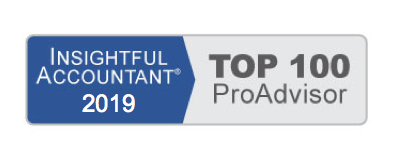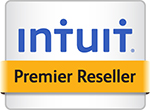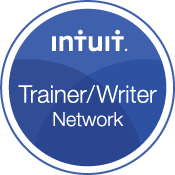-
QuickBooks Training Products
Category Archives: QuickBooks Technical
Practice Using Inventory Assemblies in QuickBooks
To practice adding a new Inventory Assembly (only if you have QuickBooks Premier or Enterprise), open the sample data file as instructed in Chapter 1 of QuickBooks 2012 In Depth: 1. On the Home page, click the Items & Services … Continue reading
How to Simplify Your Cost of Goods Sold Accounts in QuickBooks
When you are creating your Cost of Goods Sold accounts, consider using summary accounts, such as material, labor, and subcontract, and letting your Item List track more detail. For example, if you are a construction company and you have expenses … Continue reading
How to Group Overhead Expenses into Fixed or Variable Categories in QuickBooks
An expense is recorded when an asset is used or there is an outflow of cash. The expense accounts were created during the Express Start or Advanced Setup and provide you with the basic classifications needed for properly tracking your … Continue reading
QuickBooks 2012 – New 1099 Tax Form Wizard
Tracking and Reporting Vendor 1099-MISC Payments Click here if you would like to download a PDF of this Blog Article. ISSUE TO SOLVE: New for 2011, the IRS requires all credit card payers (Amex, MasterCard, Discover, etc.) to report on … Continue reading
How to Ensure Your Bank Account has a Correct Opening Balance in QuickBooks
If you completed the new bank information in the EasyStep Interview, you might have already entered your statement ending balance. Click Banking > Use Register and select your bank account to open the register. If you have a balance in … Continue reading
How to Prevent Changes to Prior Accounting Periods in QuickBooks
Did you know that you can prevent changes to prior accounting periods by setting a closing date and optional password? Log in as the Admin or External Accountant User, then from the Company Menu, select Set Closing Date. Click the … Continue reading
When to Use Classes in QuickBooks
When deciding to use classes, it is important that you have only one primary purpose for the class structure. If you try to track more than one “type” of class, the value in the reporting is diminished. For example, your … Continue reading
Accrual or Cash Basis for Profit & Loss Reports in QuickBooks
My recommendation is that business owners view their business Profit & Loss report in accrual basis. This method more accurately matches their expenses with the related revenue in the same accounting period. The business’s accountant can then review the data … Continue reading
How to Set Date Warning Preferences in QuickBooks
Fortunately, QuickBooks preferences help avoid transaction dating errors by enabling you to set a warning for date ranges. To open the date warning preference, follow these steps: 1. Log into the QuickBooks data file as the Admin or new External … Continue reading
How to Alert Users Who Try to Post Transactions to Retained Earnings in QuickBooks
Did you know that you can set a preference to warn users if they try to record a transaction to the Retained Earnings account? Click Edit > Preferences and select the Accounting preference on the left. Click the Company Preference … Continue reading












